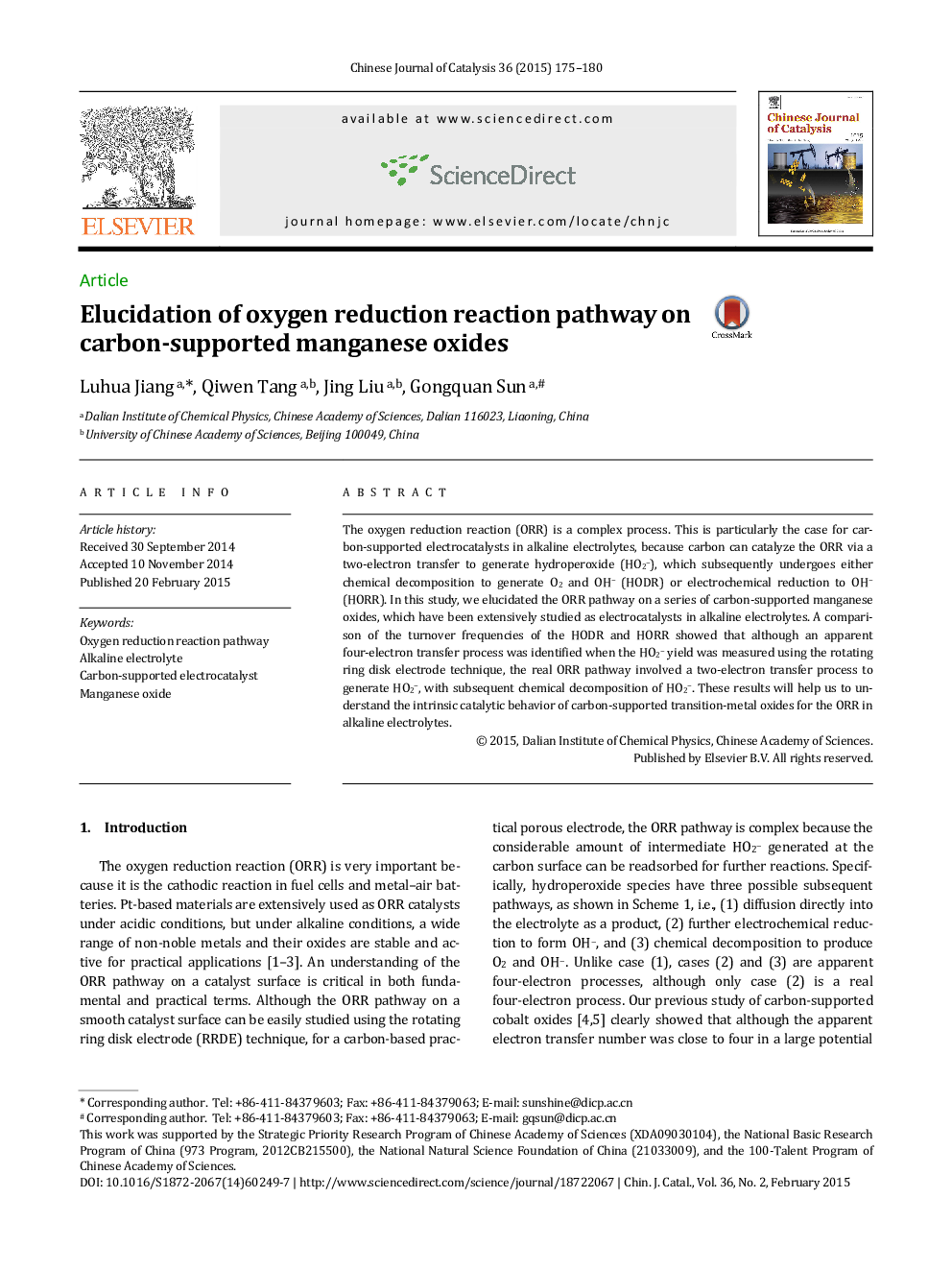| Article ID | Journal | Published Year | Pages | File Type |
|---|---|---|---|---|
| 59261 | Chinese Journal of Catalysis | 2015 | 6 Pages |
The oxygen reduction reaction (ORR) is a complex process. This is particularly the case for carbon-supported electrocatalysts in alkaline electrolytes, because carbon can catalyze the ORR via a two-electron transfer to generate hydroperoxide (HO2−), which subsequently undergoes either chemical decomposition to generate O2 and OH− (HODR) or electrochemical reduction to OH− (HORR). In this study, we elucidated the ORR pathway on a series of carbon-supported manganese oxides, which have been extensively studied as electrocatalysts in alkaline electrolytes. A comparison of the turnover frequencies of the HODR and HORR showed that although an apparent four-electron transfer process was identified when the HO2− yield was measured using the rotating ring disk electrode technique, the real ORR pathway involved a two-electron transfer process to generate HO2−, with subsequent chemical decomposition of HO2−. These results will help us to understand the intrinsic catalytic behavior of carbon-supported transition-metal oxides for the ORR in alkaline electrolytes.
Graphical AbstractThe real ORR pathway behind the apparent four-electron process on carbon-supported manganese oxides was shown to be a two-electron transfer reaction followed by hydroperoxide disproportionation.Figure optionsDownload full-size imageDownload as PowerPoint slide
